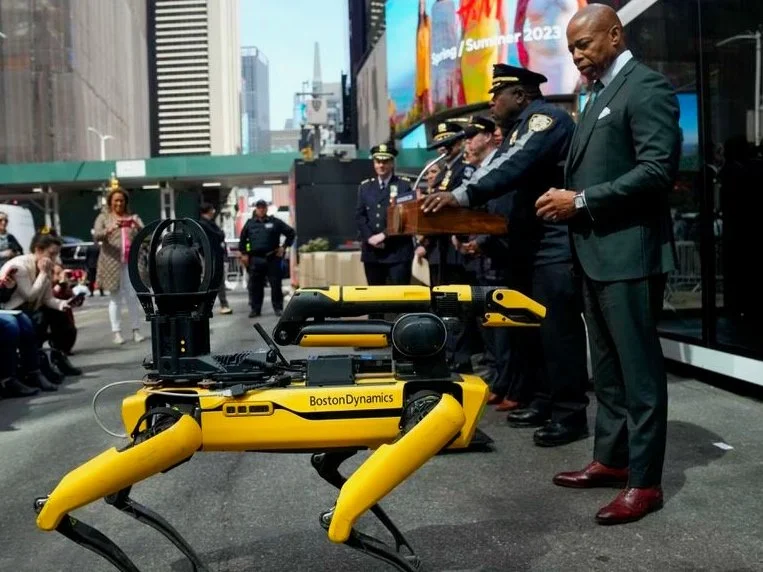Today, the New York City Council is holding a long-awaited hearing on the NYPD’s ongoing failures to comply with the Public Oversight of Surveillance Technology (POST) Act.
Passed by the City Council in June 2020, the POST Act was designed to create comprehensive transparency and oversight requirements for the NYPD when it considers adopting new surveillance technologies. Specifically, the law requires the NYPD to disclose Impact and Use Policies (IUPs) that present key information to the public related to the deployment of each technology, including but not limited to that technology’s capabilities, potential disparate impacts, and officer training requirements.
But more than three years after the law’s passage—and as we’re telling the City Council today in written testimony — the NYPD has failed to do so.
As our testimony notes, the NYPD’s Inspector General, the independent watchdog charged with oversight of the NYPD, found that the agency evaded meaningful transparency in several key ways, including by using “vague, non-specific boilerplate language throughout the IUPs”; relying on a “narrow” interpretation of the disparate impact requirement to avoid meaningful disclosure; and grouping discrete surveillance tools together in a single disclosure to “shield individual technologies from public scrutiny and oversight.”
If you’ve seen images of the 400-pound surveillance robot patrolling the Times Square subway station recently – which New York City Mayor Eric Adams has described as “only the beginning” of new policing technologies to come – you’re already familiar with one such violation. Despite the POST Act’s requirements, the NYPD did not disclose an IUP before deploying the semi-autonomous machine, equipped with four separate surveillance cameras, in the New York City subway.
What was the NYPD’s excuse for this omission? The agency claimed it didn’t need to follow the POST Act’s basic transparency requirements because that semiautonomous robot was merely an “enhancement to existing technologies.” But a semiautonomous robot is a powerful new technologies with serious, new implications. That’s like saying there’s no need to regulate cars because we already regulate horses.
Again, as the inspector general found, NYPD’s tactic of grouping different technologies together merely “allows NYPD to avoid the public notification process – a critical aspect of the POST Act – and thus cannot have been the intent of the legislation.”
In our testimony, we call on the City Council to amend the POST Act to strengthen existing oversight requirements and add enforcement mechanisms. As to oversight, the law should be amended to require City Council approval of NYPD IUPs. The NYPD should not be allowed to set its own rules. Like any public agency, its highly consequential decisions must be accountable to the people, through our democratically elected officials. And crucially, the law needs enforcement mechanisms, such as a private right of action to sue for violations or a suppression remedy. Even a perfectly written statute will fail if it lacks teeth.
As we noted, the POST Act was enacted “…to ensure an informed public debate about whether and how…powerful technologies should be used to keep New Yorkers safe.” That informed public debate – what we call democratic accountability – is not just a cornerstone of democratic governance; it is also essential to creating public safety.
Transparency and public safety are not a zero-sum game – and policing agencies like the NYPD need to stop treating them as such. With an amended POST Act, the City Council can make sure New Yorkers get the meaningful oversight they deserve.

